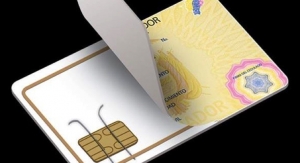Polythiophenes result from the polymerization of thiophenes, a sulfur heterocycle, that can become conducting when electrons are added or removed from the conjugated pi-orbitals via doping.
A number of applications have been proposed for conducting PTs, but none has been commercialized. Potential applications include field-effect transistors, electroluminescent devices, solar cells, photochemical resists, nonlinear optic devices, batteries, diodes, and chemical sensors. In general, there are two categories of applications for conducting polymers. Static applications rely upon the intrinsic conductivity of the materials, combined with their ease of processing and material properties common to polymeric materials. Dynamic applications utilize changes in the conductive and optical properties, resulting either from application of electric potentials or from environmental stimuli.
As an example of a static application, H.C. Starck’s poly(3,4-ethylenedioxythiophene)-poly(styrene sulfonate) (PEDOT-PSS) product BAYTRON P has been extensively used as an antistatic coating (as packaging materials for electronic components, for example).
Source: Wikipedia
URL: http://en.wikipedia.org/wiki/Polythiophenes
A number of applications have been proposed for conducting PTs, but none has been commercialized. Potential applications include field-effect transistors, electroluminescent devices, solar cells, photochemical resists, nonlinear optic devices, batteries, diodes, and chemical sensors. In general, there are two categories of applications for conducting polymers. Static applications rely upon the intrinsic conductivity of the materials, combined with their ease of processing and material properties common to polymeric materials. Dynamic applications utilize changes in the conductive and optical properties, resulting either from application of electric potentials or from environmental stimuli.
As an example of a static application, H.C. Starck’s poly(3,4-ethylenedioxythiophene)-poly(styrene sulfonate) (PEDOT-PSS) product BAYTRON P has been extensively used as an antistatic coating (as packaging materials for electronic components, for example).
Source: Wikipedia
URL: http://en.wikipedia.org/wiki/Polythiophenes













